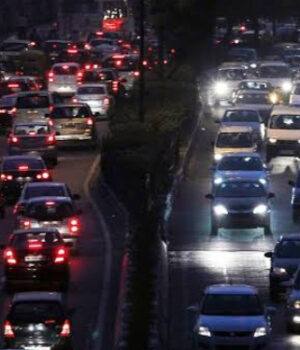During this year’s Navratri, Ghaziabad observed a noteworthy shift in vehicle sales, with a 5.8% decline in four-wheeler purchases and a substantial 12.8% increase in two-wheeler sales compared to the previous year’s Navratri festivities. Experts in the automotive industry suggest that these figures mirror the changing preferences of the lower middle class and a growing reluctance to use cars on congested roads.
Over the Navratri period, which spanned from October 15 to 24 this year, the city recorded 1,247 four-wheeler sales and 2,288 two-wheeler sales, according to data from the Regional Transport Office (RTO). In contrast, during the Navratri period between September 26 and October 5 in the previous year, Ghaziabad had seen 1,324 four-wheeler sales and 2,029 two-wheeler sales.
Interestingly, while the sales of four-wheelers dropped, the RTO’s overall collection of motor vehicle (MV) taxes showed a slight increase. This Navratri, the RTO collected Rs 15.7 crore in MV taxes, compared to Rs 14.9 crore in the previous year.
PK Singh, RTO (administration), commented on the trend, stating, “There is a tradition of purchasing vehicles during Navratri as it is considered auspicious. Over the past several Navratris, except for the pandemic-affected years, both two-wheeler and four-wheeler sales have consistently risen. However, this time, the sales of four-wheelers decreased compared to the previous year.”
Auto expert Rameshrwam Saran pointed out that this change in consumer preference might signify a growing demand from the lower middle class, overshadowing that of the upper middle class. Saran explained, “Ghaziabad is a satellite town of Delhi, and people from all income groups commute within the city or to other cities in the National Capital Region (NCR). While two-wheelers are the preferred mode of commuting for the lower middle class, both the upper and upper-middle classes tend to favor four-wheelers.”
Furthermore, these statistics may also indicate a shift towards alternative transportation methods due to the daily traffic congestion experienced on the city’s roads, potentially prompting people to opt for public transport.










